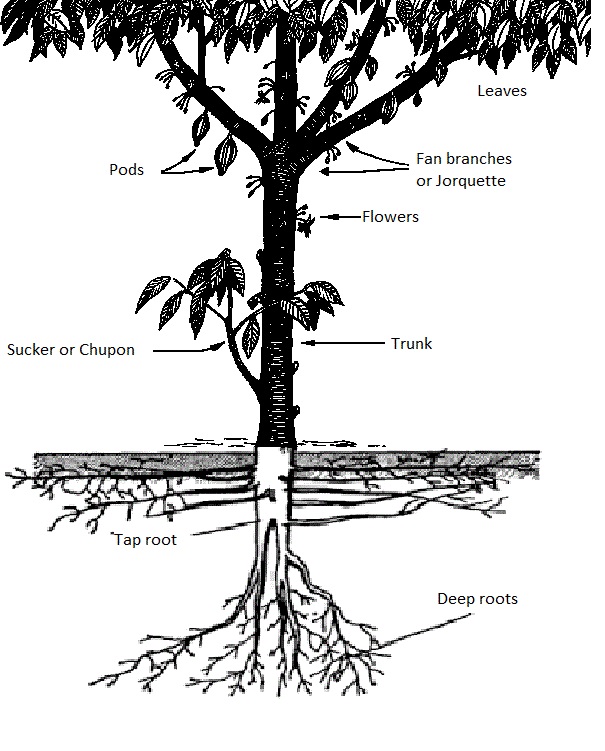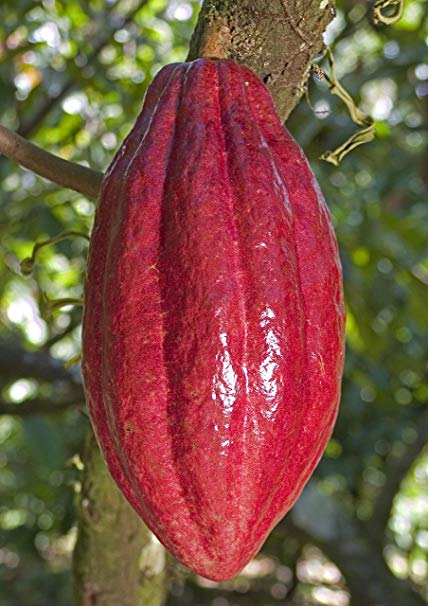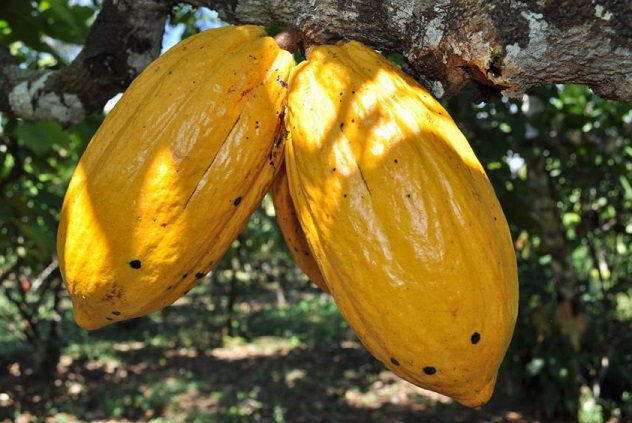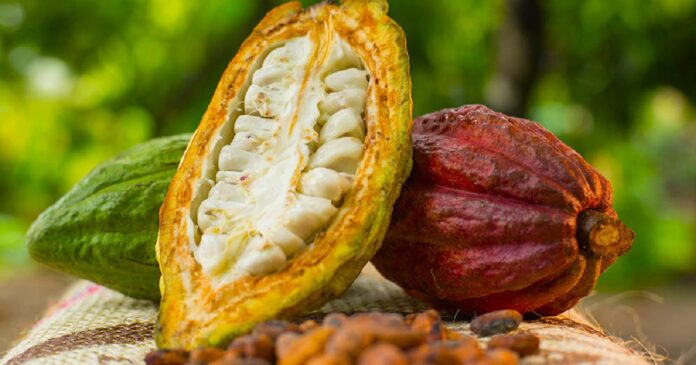Today, we talk about the different types of cocoa with their characteristics. We would also like you to be very familiar with the cocoa tree so we added the parts of the cocoa tree.
First let us look at the cocoa tree and it’s parts.

Now let us talk about the various parts
The roots
A mature cocoa tree is made up of a tap root about 120 – 200cm long. The root system also has lateral feeder roots found in the topsoil. It may go down about 40-50cm where the humic layer is deep. These lateral roots can grow very far from the tree canopy to form something like a woven mat. The farthest part of the taproot divides into small rootlets which absorb water and nutrients. Selecting good sites with deep soil enhances root formation.
The trunk
The stem grows after germination and the formation fo the primary leaves at the nursery stage. It grows vertically for about 14 – 18 months. Then the terminal bud degenerates leading to the development of five branches, growing horizontally. We call these braches jorquette. One of the axillary buds below the jorquette also develops into the chupon. The chupon behaves like the main stem. At 1.5meters it stops growing and forms another jorquette which when developed lead to the dyeing of the first one. In commercial cocoa plantation, this must be stopped by pruning the chupon to make one single stem.
The leaves
The young leaves of the cocoa plant are soft and have green midribs and veins. They become dark green when they are matured. The leaves that grow under shade are larger and greener than those that grow in full sun.
The flowers
The flowers of the cocoa plant develop on small flower stalk on the trunk and branches in clusters. The flowers are small pinkish-white or greenish-white. Pollination of the flowers is basically done by insects. However, pollination can also be done by hand.
The fruit
It takes between 5-6months for the fruit of cocoa to mature after flowering. We call the very young fruit cherelle. There are varying shapes, colours and sizes of fruits. These characteristics depend on the variety and sometimes environmental.
Now let us look at some of the types of cocoa fruits.
Types of cocoa
We present 3 major types of cocoa and a hybrid. These groups of cocoa have varying characteristics making them desirable under certain conditions. The hybrid is developed with preferred characteristics of the other groups.
1. Forastero

Characteristics
- Hard pod husk is hard
- It has small and elongated pods
- Pod surface not warty and furrows inconspicuous.
- Ripe fruits are yellow, Unripe fruits are green.
- The average number of beans/ pod is 30 or more.
- It also had flat seeds
- It is hardy and high yielding.
- We use it for selection of breeding varieties.
- It is dominant planting material in cocoa production.
- An example is the West African Amelonado.
- It has quite an unpleasant flavour with a bitter taste.
Origin
Peru, Ecuador and Colombia and the Amazon basin in Brazil
2. Trinitario

Characteristics
- Pod husk mostly hard
- It is an intermediate between Forastero and Criollo
- Unripe fruit colour is red/ purple, Ripe fruit colour is orange
- Pod surface is intermediate
- The average number of beans/ pod 30 or more. Seeds are intermediate.
- Highly susceptible to Black pod
Origin
• Trinidad and Venezuela
3. Criollo

Characteristics
- Pod husk is soft
- The pod surface is warty and conspicuously furrowed.
- It is normally large and elongated. Red/green when unripe and yellow/orange when ripe.
- The average number of beans/ pod 20-30. Seeds are plump.
- It is very vulnerable to diseases
- It possesses a bland flavour and a pleasant aroma
Origin
Mexico, Nicaragua, Guatemala, Colombia, Venezuela and Indonesia.
4. Hybrid

Characteristics
- It has attributes of both parents that were crossed to produce the hybrid
- It establishes easily
- Early bearing and high yielding.
- It can tolerant black pod and cocoa swollen shoot virus diseases.
- Also tolerant to mirids/ capsids.


